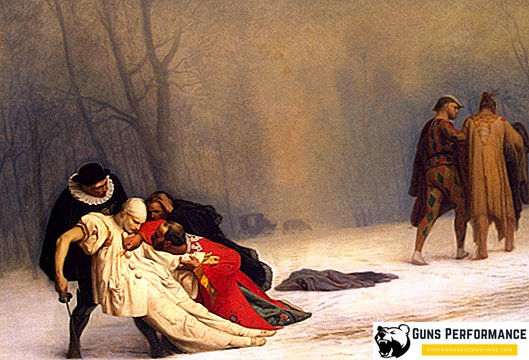Each of us at least once in his life looked into the starry sky. Someone looked at this beauty, experiencing romantic feelings, the other tried to understand where all this beauty comes from. Life in space, unlike life on our planet, flows at a different speed. Time in outer space lives in its own categories, the distances and sizes in the Universe are enormous. We rarely think about the fact that before our eyes constantly evolving galaxies and stars. Every object in the endless space is the result of certain physical processes. Galaxies, stars, and even planets have major phases of development.

Our planet and we all depend on our luminary. How long will the sun delight us with its warmth, breathing life into the solar system? What awaits us in the future in millions and billions of years? In this regard, it is curious to learn more about what are the stages of the evolution of astronomical objects, where the stars come from and how the life of these wonderful lights in the night sky ends.
The origin, birth and evolution of stars
The evolution of the stars and planets that inhabit our Milky Way galaxy and the entire Universe has, for the most part, been well studied. The laws of physics, which help to understand the origin of cosmic objects, work unshakably in space. The basis in this case is taken on the theory of the Big Bang, which is now the dominant doctrine on the process of the origin of the Universe. The event that shook the universe and led to the formation of the universe, by space standards, lightning fast. For space, from the birth of a star to its death, moments pass. Huge distances create the illusion of constancy of the universe. A star that flashed in the distance shines us for billions of years, at that time it may not be.
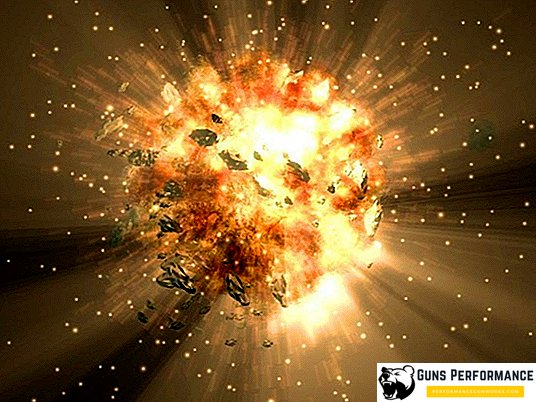
The theory of the evolution of galaxies and stars is a development of the Big Bang theory. The doctrine of the birth of stars and the emergence of stellar systems is different in scale and timing, which, unlike the universe as a whole, can be observed with modern means of science.
Studying the life cycle of stars is possible on the example of the nearest light to us. The sun is one of the hundreds of trillions of stars in our field of vision. In addition, the distance from the Earth to the Sun (150 million km) provides a unique opportunity to explore an object without leaving the limits of the Solar System. The information obtained will allow to understand in detail how other stars are arranged, how quickly these giant heat sources are exhausted, what are the stages of development of a star and what will be the end of this brilliant life - quiet and dim or sparkling, explosive.
After the Big Bang, the smallest particles formed interstellar clouds, which became the “hospital” for trillions of stars. It is characteristic that all stars were born at the same time as a result of contraction and expansion. Compression in the clouds of cosmic gas occurred under the influence of its own gravity and similar processes in new stars in the neighborhood. Expansion has arisen as a result of internal pressure of interstellar gas and under the action of magnetic fields inside the gas cloud. At the same time, the cloud rotated freely around its center of mass.
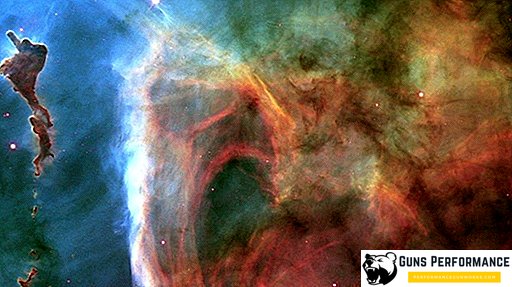
The gas clouds formed after the explosion are 98% composed of atomic and molecular hydrogen and helium. Only 2% in this array accounts for dust and solid microscopic particles. Previously it was believed that in the center of any star lies the core of iron, heated to a temperature of a million degrees. This aspect explained the huge mass of the luminary.
In the opposition of physical forces, compression forces prevailed, since the light resulting from the release of energy does not penetrate into the gas cloud. The light, together with a part of the emitted energy, spreads outward, creating a negative temperature and a low pressure zone inside a dense accumulation of gas. Being in such a state, the cosmic gas is rapidly compressed, the influence of the forces of gravitational attraction leads to the fact that particles begin to form stellar matter. When a gas cluster is dense, intense compression leads to the formation of a star cluster. When the size of the gas cloud is insignificant, the compression leads to the formation of a single star.
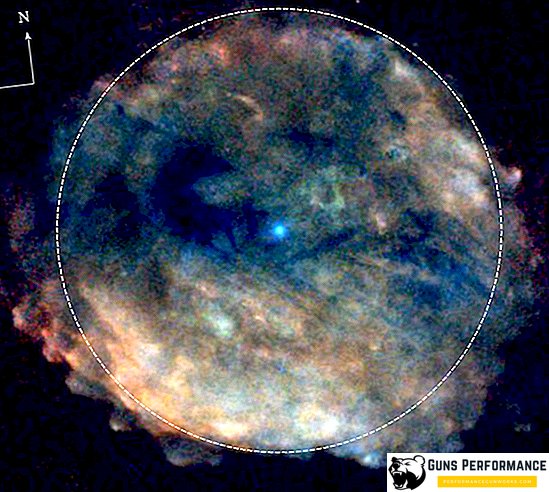
A brief description of what is happening is that the future of the star passes through two stages - fast and slow compression to the state of the protostar. Speaking in simple and understandable language, rapid compression is the fall of the stellar matter to the center of the protostar. Slow compression occurs on the background of the formed center of the protostar. Over the next hundred thousand years, the new formation is reduced in size, and its density increases millions of times. Gradually, the protostar becomes opaque due to the high density of stellar matter, and the continued compression triggers the mechanism of internal reactions. The growth of internal pressure and temperatures leads to the formation of a future center of gravity in the future star.
In this state, the protostar stays for millions of years, slowly giving off heat and gradually contracting, decreasing in size. As a result, the contours of a new star emerge, and the density of its substance becomes comparable to the density of water.
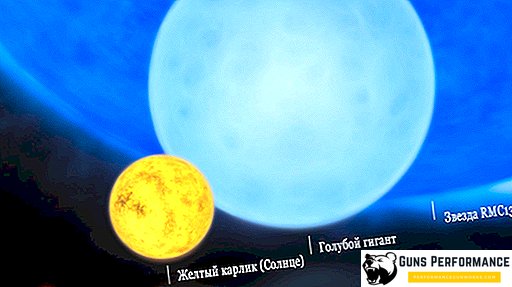
On average, the density of our star is 1.4 kg / cm3 - almost the same as the density of water in the salty Dead Sea. In the center of the Sun has a density of 100 kg / cm3. The stellar matter is not in a liquid state, but is in the form of a plasma.
Under the influence of enormous pressure and temperature of approximately 100 million K, thermonuclear reactions of the hydrogen cycle begin. Compression ceases, the mass of the object increases when the energy of gravity turns into thermonuclear burning of hydrogen. From this point on, a new star, radiating energy, begins to lose mass.
The above described formation of a star is just a primitive scheme that describes the initial stage of the evolution and birth of a star. Today, such processes in our galaxy and in the entire Universe are almost imperceptible due to the intense depletion of stellar material. For the entire conscious history of observations of our galaxy, only isolated appearances of new stars have been noted. In the scale of the universe, this figure can be increased hundreds and thousands of times.
Most of their lives, protostars are hidden from the human eye by a dust shell. The emission of the nucleus can be observed only in the infrared range, which is the only way to see the birth of a star. For example, in 1967, astronomical scientists in the Orion Nebula discovered a new star, whose radiation temperature was 700 degrees Kelvin. Subsequently, it turned out that the birthplace of protostars are compact sources, which are available not only in our galaxy, but also in other parts of the universe that are distant from us. In addition to infrared radiation, the places of birth of new stars are marked by intense radio signals.
The process of studying and the evolution of stars
The whole process of knowing the stars can be divided into several stages. At the very beginning, determine the distance to the star. Information about how far away the star is from us, how long the light goes from it, gives an idea of what happened to the star during all this time. After a person learned to measure the distance to distant stars, it became clear that the stars are the same suns, only of different sizes and with different destinies. Knowing the distance to the star, by the level of light and the amount of energy emitted, one can trace the process of thermonuclear fusion of the star.
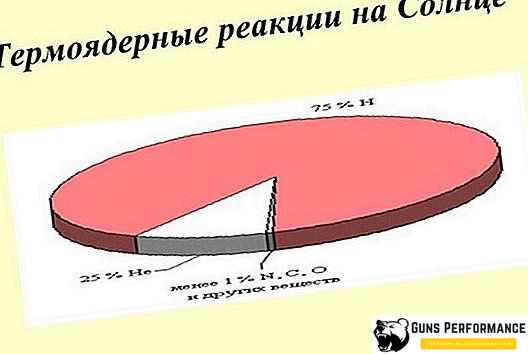
Following the determination of the distance to the star, one can, using spectral analysis, calculate the chemical composition of the star and find out its structure and age. Thanks to the appearance of the spectrograph, scientists have been able to study the nature of the light of stars. This device can determine and measure the gas composition of the stellar matter, which the star has at different stages of its existence.
Studying the spectral analysis of the energy of the Sun and other stars, scientists came to the conclusion that the evolution of stars and planets has common roots. All cosmic bodies have the same type, similar chemical composition, and are derived from the same matter resulting from the Big Bang.
Stellar matter consists of the same chemical elements (up to iron) as our planet. The only difference is in the number of these or other elements and in the processes occurring on the Sun and inside the earth's firmament. This distinguishes the stars from other objects in the universe. The origin of the stars should also be considered in the context of another physical discipline - quantum mechanics. According to this theory, the matter that determines the stellar matter consists of constantly dividing atoms and elementary particles creating their own microcosm. In this light, of interest is the structure, composition, structure and evolution of stars. As it turned out, the main mass of our star and many other stars accounts for only two elements - hydrogen and helium. A theoretical model describing the structure of the star will allow understanding their structure and the main difference from other space objects.

The main feature is that many objects in the Universe have a certain size and shape, whereas a star can change its size as it develops. Hot gas is a compound of atoms weakly bound to each other. Millions of years after star formation, the cooling of the surface layer of stellar matter begins. The star gives most of its energy to outer space, decreasing or increasing in size. The transfer of heat and energy occurs from the inner regions of the star to the surface, affecting the intensity of the radiation. In other words, the same star in different periods of its existence looks different. Thermonuclear processes based on reactions of the hydrogen cycle contribute to the transformation of light hydrogen atoms into heavier elements — helium and carbon. According to astrophysicists and nuclear scientists, such a thermonuclear reaction is the most effective in terms of the amount of heat released.
Why doesn’t thermonuclear fusion of the nucleus end with the explosion of such a reactor? The thing is that the forces of the gravitational field in it can hold stellar matter within the limits of the stabilized volume. From this we can draw an unambiguous conclusion: any star is a massive body, which retains its size due to the balance between the forces of gravity and the energy of thermonuclear reactions. The result of this ideal natural model is a heat source that can work for a long time. It is assumed that the first life forms on Earth appeared 3 billion years ago. The sun in those days warmed our planet just as it is now. Consequently, our star has changed little, despite the fact that the scale of the radiated heat and solar energy is enormous - more than 3-4 million tons every second.
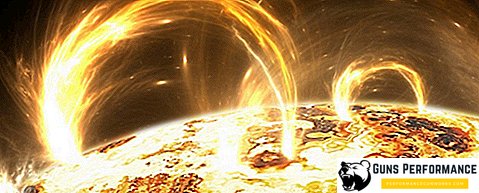
It is easy to calculate how much over the years of its existence, our star has lost weight. This will be a huge figure, but because of its huge mass and high density, such losses across the Universe look insignificant.
Stages of the evolution of stars
The fate of the star in depends on the initial mass of the star and its chemical composition. As long as the main reserves of hydrogen are concentrated in the core, the star is in the so-called main sequence. As soon as there was a tendency to increase the size of the star, it means that the main source for thermonuclear fusion has dried up. Began a long final path of transformation of a celestial body.

Formed in the universe luminaries are initially divided into three most common types:
- normal stars (yellow dwarfs);
- dwarf stars;
- giant stars.
Stars with low mass (dwarfs) slowly burn hydrogen stores and live their lives quite calmly.
Such stars are the majority in the Universe and our star is a yellow dwarf. With the onset of old age, the yellow dwarf becomes a red giant or supergiant.
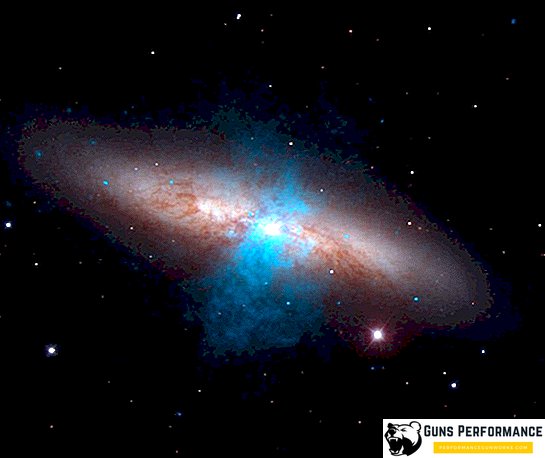
Based on the theory of the origin of stars, the process of forming stars in the universe has not ended. The brightest stars in our galaxy are not only the largest, compared to the Sun, but also the youngest. Astrophysicists and astronomers call these stars blue supergiants. In the end, they face the same fate, which is experiencing trillions of other stars. First, the rapid birth, brilliant and ardent life, after which there comes a period of slow decay. Stars such as the Sun have a long life cycle, being in the main sequence (in the middle part).
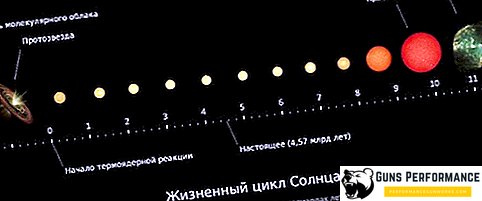
Using data on the mass of a star, we can assume its evolutionary path of development. An illustrative illustration of this theory is the evolution of our star. Nothing is everlasting. As a result of thermonuclear fusion, hydrogen is converted to helium, therefore, its initial reserves are consumed and reduced. Sometime, very soon, these stocks will run out. Judging by the fact that our Sun continues to shine for more than 5 billion years, without changing in size, the mature age of the star can still last for about the same period.
The depletion of hydrogen reserves will lead to the fact that under the influence of gravity the core of the sun will begin to shrink rapidly. The core density will become very high, with the result that thermonuclear processes will move to the layers adjacent to the core. Such a state is called collapse, which can be caused by thermonuclear reactions in the upper layers of the star. As a result of high pressure, thermonuclear reactions involving helium are triggered.

The supply of hydrogen and helium in this part of the star will last for millions of years. It is not very soon that depletion of hydrogen reserves will lead to an increase in the intensity of radiation, an increase in the size of the shell and the size of the star itself. As a result, our sun will become very large. If we imagine this picture in tens of billions of years, then instead of a dazzling bright disk, a hot red disk of gigantic sizes will hang on the sky. The red giants are the natural phase of the evolution of a star, its transition state into the category of variable stars.
As a result of this transformation, the distance from the Earth to the Sun will decrease, so that the Earth will fall into the zone of influence of the solar corona and begin to “roast” in it. The temperature on the surface of the planet will increase tenfold, which will lead to the disappearance of the atmosphere and the evaporation of water. As a result, the planet will turn into a lifeless rocky desert.
The final stages of the evolution of stars
Having reached the phase of the red giant, the normal star becomes a white dwarf under the influence of gravitational processes. If the mass of the star is approximately equal to the mass of our Sun, all the main processes in it will occur quietly, without impulses and explosive reactions. The white dwarf will die for a long time, fading to ashes.
In cases where the star originally had a mass more than solar 1.4 times, the white dwarf will not be the final stage. With a large mass inside the star, the processes of compaction of stellar matter begin at the atomic, molecular level. Protons turn into neutrons, the star's density increases, and its size rapidly decreases.

Neutron stars known to science have a diameter of 10-15 km. With such small sizes, the neutron star has a huge mass. One cubic centimeter of stellar matter can weigh billions of tons.
In the event that we initially dealt with a star of a large mass, the final stage of evolution takes on other forms. The fate of a massive star - a black hole - an object with unexplored nature and unpredictable behavior. The enormous mass of the star contributes to an increase in the gravitational forces that set the compression forces in motion. Suspend this process is not possible. The density of matter increases until it turns into infinity, forming a singular space (Einstein's theory of relativity). The radius of such a star will eventually become zero, becoming a black hole in outer space. Black holes would be much larger if in space most of the space was occupied by massive and supermassive stars.
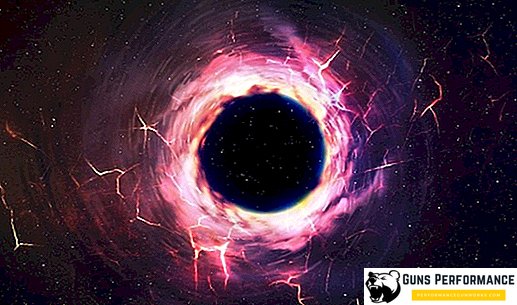
It should be noted that during the transformation of a red giant into a neutron star or into a black hole, the Universe can survive a unique phenomenon - the birth of a new space object.
The birth of a supernova is the most impressive final stage in the evolution of stars. Здесь действует естественный закон природы: прекращение существование одного тела дает начало новой жизни. Период такого цикла, как рождение сверхновой, в основном касается массивных звезд. Израсходовавшиеся запасы водорода приводят к тому, что в процесс термоядерного синтеза включается гелий и углерод. В результате этой реакции давление снова растет, а в центре звезды образуется ядро железа. Под воздействием сильнейших гравитационных сил центр массы смещается в центральную часть звезды. Ядро становится настолько тяжелым, что неспособно противостоять собственной гравитации. Как следствие, начинается стремительное расширение ядра, приводящее к мгновенному взрыву. Рождение сверхновой - это взрыв, ударная волна чудовищной силы, яркая вспышка в бескрайних просторах Вселенной.
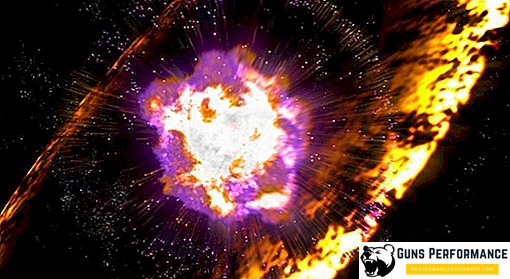
Следует отметить, что наше Солнце не является массивной звездой, поэтому подобная судьба ее не грозит, не стоит бояться такого финала и нашей планете. В большинстве случаев взрывы сверхновых происходят в далеких галактиках, с чем и связано их достаточно редкое обнаружение.
Finally
Эволюция звезд - это процесс, который растянут по времени на десятки миллиардов лет. Наше представление о происходящих процессах - всего лишь математическая и физическая модель, теория. Земное время является лишь мгновением в огромном временном цикле, которым живет наша Вселенная. Мы можем только наблюдать то, что происходило миллиарды лет назад и предполагать, с чем могут столкнуться последующие поколения землян.








